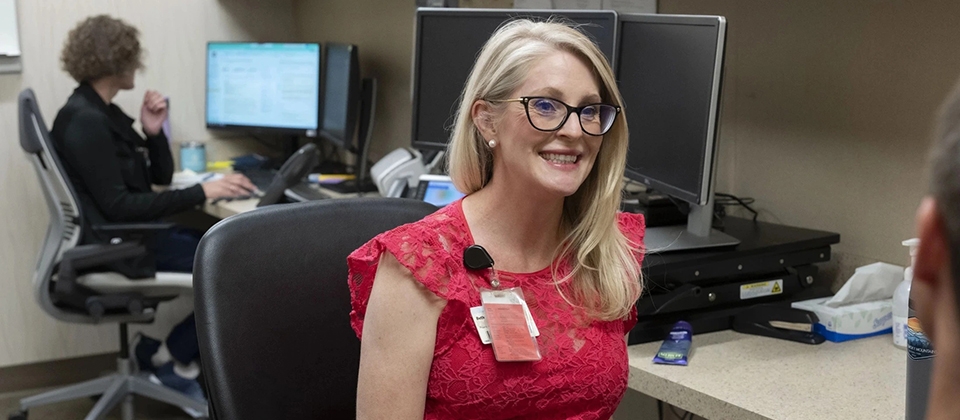Turning Heart Failure Into Success

Oct. 9, 2025
For decades, treatment of heart failure has looked the same: Land in the hospital. Get treated. Go home. Go to the doctor. Try a medication. Wait. See if it works. Go back to the doctor. Adjust medication. Wait. See if it works. Go back to the doctor. Adjust medication. Wait....
It can take months to see improvement or get on proper doses of medication. During that time, the patient gets frustrated ― and often ends up being readmitted to the hospital.
Primary efforts
In the spring of 2024, Kevin McCormick, MD, internist and division chief, primary health, Corewell Health in West Michigan, led a multidisciplinary team in finding ways to better reach and treat the growing population of heart failure patients. Together, they developed a process to help these patients get the right treatments, see their doctors quickly, and work together to improve their health.
“This could lead to fewer hospital stays, emergency visits, and other problems caused by heart failure,” Dr. McCormick said.
Based on proven methods, the team created tools and learning materials for both doctors and patients. Dr. McCormick said, “Heart failure is a chronic progressive disease, but with the right medicine and education, we can slow it down and help improve their quality of life.”
Key strategies
- Early identification of patients with heart failure
- Follow-up visits within two to five days after hospital discharge are linked to better outcomes
- More frequent medication adjustments to reach desired levels faster
- Team-based care that brings in pharmacy, behavioral health, care management, and palliative care. Patients can get multiple services in one visit
Just a few months in, some clinics were already seeing slower growth in admissions compared to others.
Specialty hope
A similar approach has been working well within cardiology. Clinical pharmacy specialists have been supporting heart failure patients for a few years through the goal-directed medication therapy clinic, often referred to as GDMT ― a pharmacist-led initiative. The initiative started in the former Corewell Health Advanced Heart Failure clinic. The clinic, renamed in 2022, is now known as the HOPE clinic, or Heart OPtimization and Evaluation clinic.
“It's a nationwide concern that we're not optimizing medications for heart failure patients soon enough,” said Beth Twydell, clinical pharmacy specialist, who has been seeing heart failure patients in the HOPE clinic’s office that focuses on goal-directed medical therapies.
The process begins even before a heart failure patient leaves the hospital. A nurse navigator helps the patient get a referral directly to the HOPE clinic, where their first follow-up visit is scheduled within three to five days of discharge — a process that normally could have taken weeks. Then the medication adjustment, along with patient education, begins right away.
Beth or one of her pharmacy colleagues may see or talk to the patient as often as weekly. Patient goals may include:
- Educating patients on heart failure signs and symptoms
- Stressing the need for heart-strengthening medications
- Helping patients get to the best level of heart-strengthening medications for their needs
- Safety and tolerance of medication
- Helping with prescription affordability
Acting under a license agreement with the provider and through shared decision-making with the patient, she will add and adjust the specific combination of heart-strengthening medications. “The goal is to help patients reach the maximum doses of the medications or their own optimal dose,” she said.
Turning failure into success
Beth recalls one patient who was resistant to changing medicines or increasing dosage. Through education and building a trusting relationship, “We made decisions together based on how he was feeling and what was best for him,” she said.
After about 12 weeks, when his test results showed great improvement, Beth recalls the relief and excitement her patient expressed as he thanked her for her help.
“It is exciting to see a patient’s ejection fraction improve, but our main goal with medications is to help our patients feel better, as well as decrease symptoms of heart failure, risk of heart failure hospitalization, and risk of death. When patients feel better, they avoid emergency visits and readmissions because they are not having symptoms of heart failure."
Since its inception, the clinic has seen more than 500 patients. For 2024, more than half of the patients seen by a GDMT pharmacist showed significant improvement in their heart failure condition.
The heart failure program is just one of many population health initiatives to bring personalized, preventive care to our most vulnerable patients.

